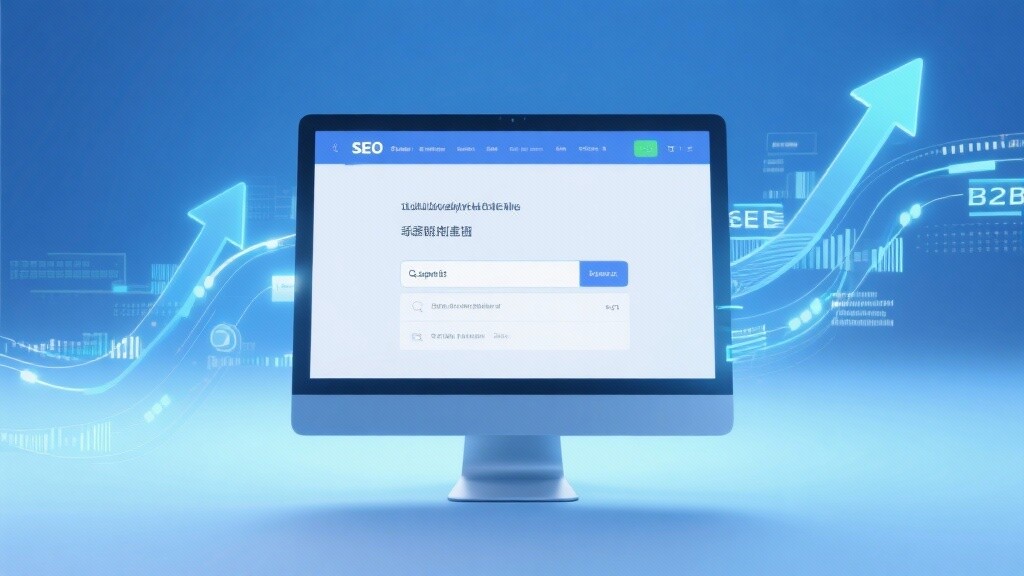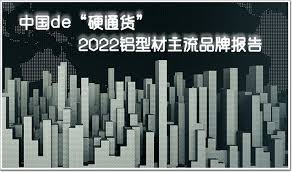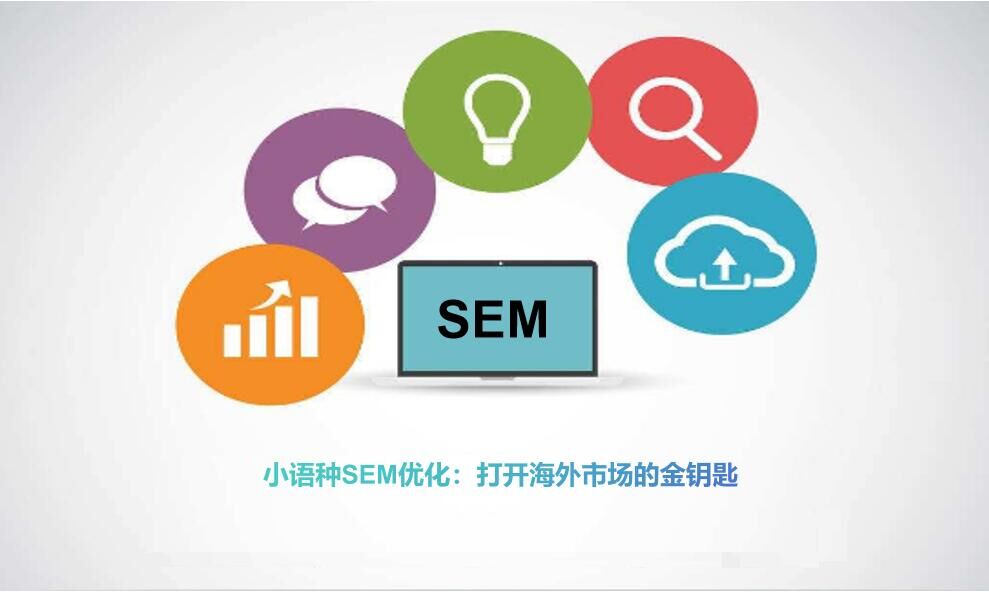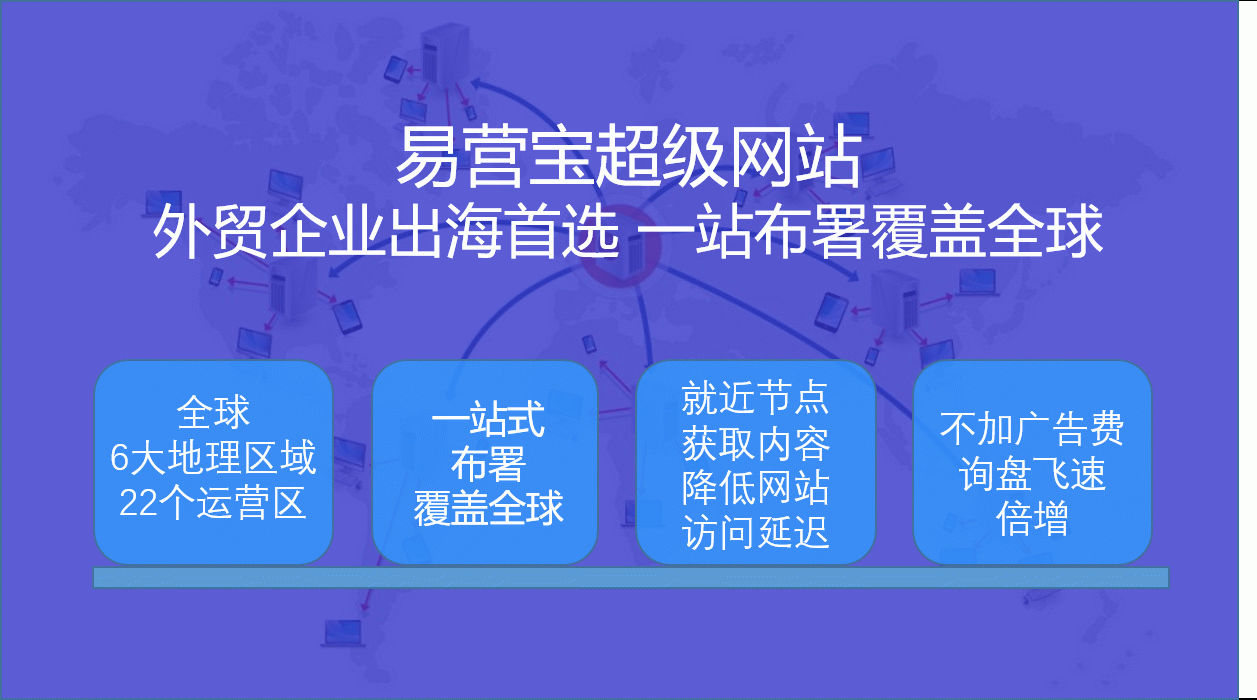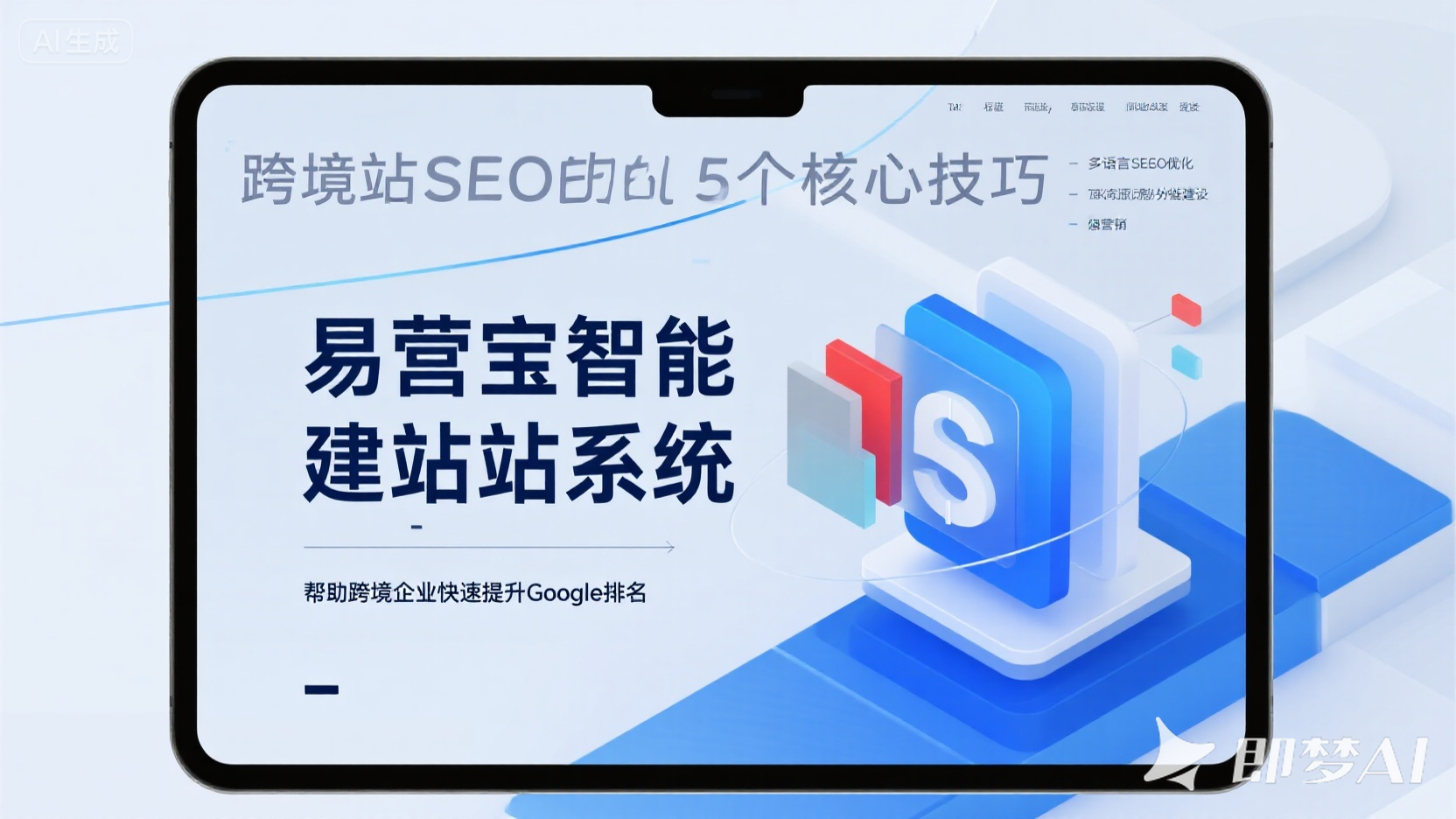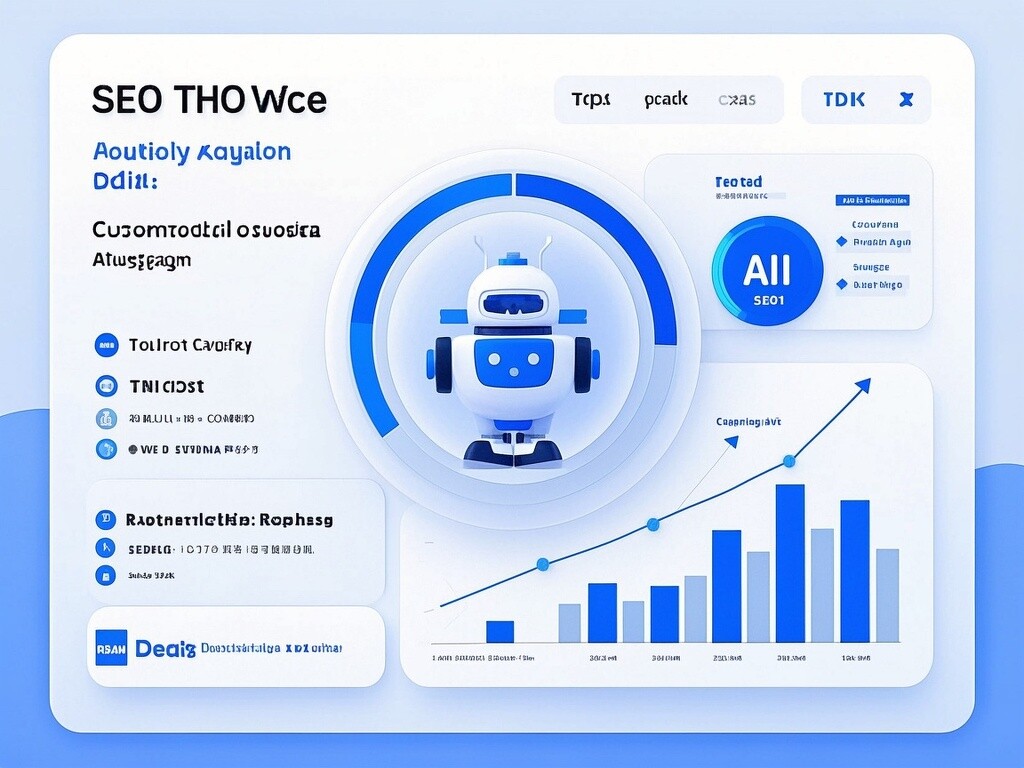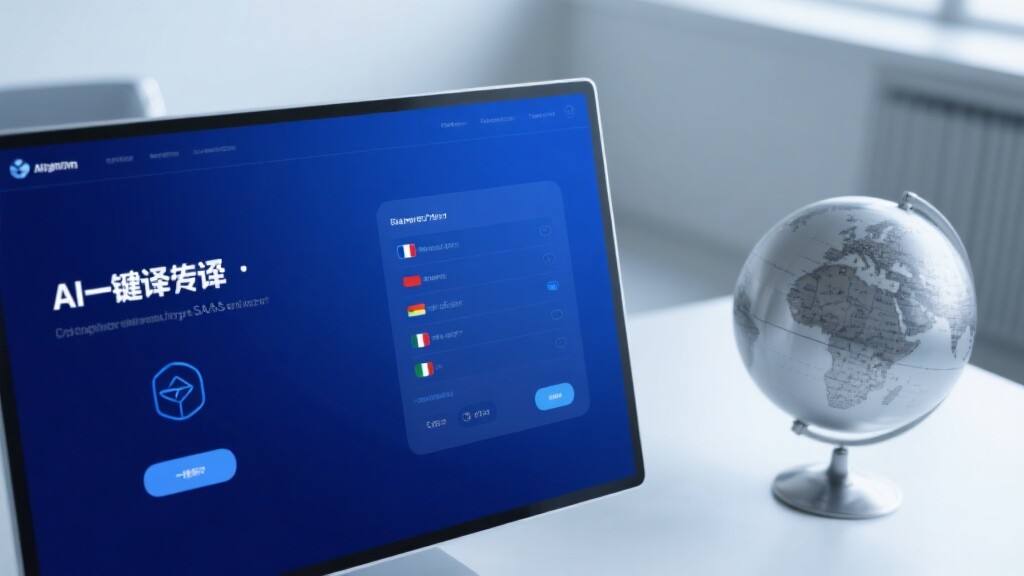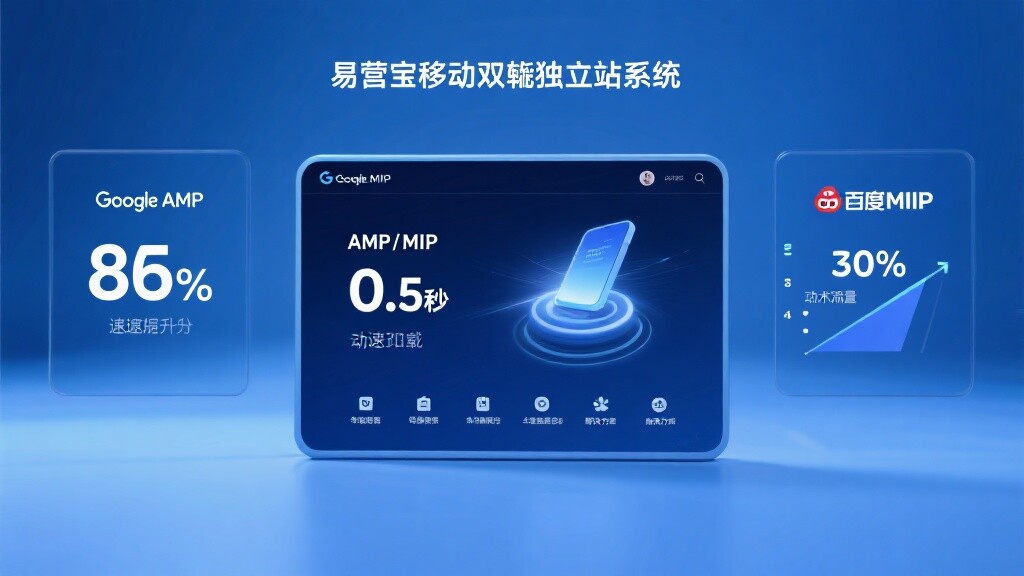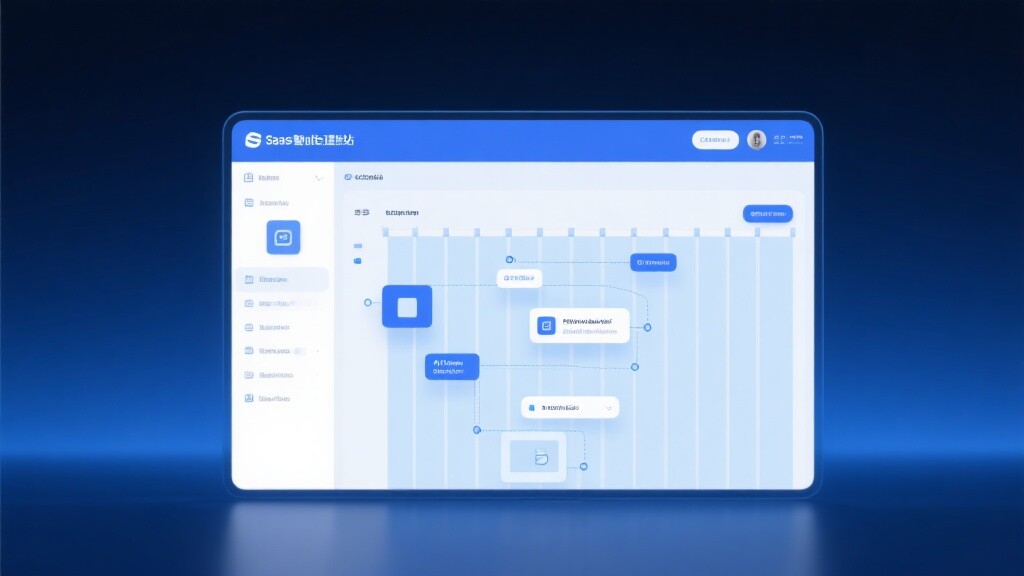SEO Definition: A systematic engineering approach that drives organic search traffic and rankings.
SEO (Search Engine Optimization) refers to the process of improving a website's visibility and ranking in organic search results on search engines (such as Google and Baidu) by enhancing its technical architecture, content quality, user experience, and external reputation .
The core strategic goal of SEO:
Visibility enhancement: Ensure that the website can be correctly crawled and indexed by search engines.
Ranking: Getting web pages with target keywords into the first page of search results (SERP Top 10), especially the top three (Top 3).
Traffic growth: Continuously acquire accurate, free, and high-converting-intent organic search traffic.
Brand Authority: By achieving high rankings and providing high-quality content, the website aims to become the benchmark for EEAT (Experience, Professionalism, Authority, and Trustworthiness) within the industry.
The essential value of SEO: to obtain the highest long-term digital asset returns with the lowest long-term cost.
The history of SEO: From "data-driven" to "user-centric" algorithmic evolution
The history of SEO development reflects the continuous intelligent upgrading of search engine algorithms, and its core concept has undergone a revolutionary shift from focusing on **"machines"** to focusing on **"users".
1. Early Stage: Keyword Density and Link Count (1990s-2003)
Focus: Simply relying on the density of keywords on the page and the sheer number of backlinks .
Features: Rankings are easily manipulated using black hat techniques (such as hidden text and link farms), resulting in a very poor user experience.
2. PageRank and the Era of Algorithmic Penalties (2003-2015):
Milestone: Google launched the PageRank algorithm, which began to prioritize the quality and authority of links over their quantity.
Major update:
Panda: Punishing websites with low quality and thin content , emphasizing content quality .
Penguin: Punishes spam and unnatural links , emphasizing the naturalness of links .
Impact: SEO is shifting towards content creation and high-quality link building .
3. Mobile and Semantic Search (2015-2020):
Technology-driven: The introduction of Mobile-First Indexing makes mobile device compatibility a mandatory ranking factor.
AI Algorithms: The application of AI systems such as RankBrain enables search engines to understand the true search intent and semantics behind search queries , rather than simply matching keywords.
4. Experience, performance, and the EEAT authoritative system (2020 to present):
User Experience Quantification: The introduction of Core Web Vitals' three performance metrics quantifies website loading speed and stability as core ranking signals.
The highest standard: EAT is upgraded to EEAT (Experience, Professionalism, Authority, Trustworthiness) . In high-risk (YMYL) areas, content lacking genuine professional experience and authoritative endorsement is almost impossible to achieve a high ranking.
The fundamental technical principle of SEO: the systematic synergy of three core pillars
The success of modern SEO is built on the perfect synergy of three pillars: technology, content, and authority .
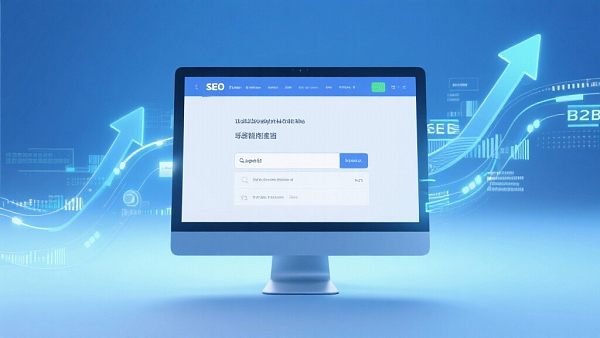
1. Technical SEO: The Cornerstone of Ranking
Principle: Ensure the website's technical foundation is search engine friendly, eliminating all crawling and indexing obstacles.
Crawling budget and efficiency: Optimize Robots.txt and Sitemap.xml to ensure that the crawler uses limited resources to crawl the most important pages.
Website health and speed: Optimize Core Web Vitals (LCP, INP, CLS) to ensure fast page loading speeds and low interaction latency, meeting Google's quantitative standards for user experience.
Architecture and Accessibility: Clear URL structure , proper HTTPS deployment, mobile responsive design, and appropriate use of schema-based structured data to help search engines understand content.
2. Content SEO: Matching Intent with Value
Principle: Create high-quality content that closely matches user search intent , is original and in-depth, and meets EEAT standards.
Search intent analysis: Determine the user's purpose behind keywords (information, transactions, navigation, business research) and provide the content format that best matches that purpose (blog articles, product pages, guides).
Topic Cluster: Create multiple interconnected long-tail keyword subpages around a core theme to collectively build the depth and authority of that theme.
Content professionalism: Ensure the content is accurate and comprehensive , and highlight the author's professional qualifications and experience in high-risk content.
3. Off-Page SEO: Reputation and Authority Endorsement
Principle: Establishing and maintaining a brand's authority, trustworthiness, and reputation outside the website is an important "voting" mechanism for algorithms to evaluate a website's value.
High-quality backlinks: Organic links from authoritative, high-authority, and content-related websites in the industry . This remains one of the most important indicators for ranking highly competitive keywords.
Brand Mention and PR: Through content marketing and digital PR campaigns, ensure that the brand name is naturally mentioned and positively discussed in authoritative media, forums, and social media platforms.
Local SEO: For businesses serving local customers, optimize your Google My Business profile and local citations.
Technical Features and Business Advantages of SEO
The value of SEO lies in its sustainability, high efficiency, and low long-term cost, making it the most reliable customer acquisition channel for modern enterprises.
1. A sustainable, low-cost customer acquisition model
Features: Unlike the "pay-per-click" model of paid advertising (SEM), once SEO traffic is acquired, it can continue to flow in for free as long as optimization is maintained.
Advantages: Over time, the average cost of customer acquisition (CAC) for SEO will continue to decline , far below that of any other marketing channel.
2. Extremely high traffic conversion efficiency
Characteristics: SEO traffic comes from users who actively search for specific needs; it is high-intent traffic .
Advantages: This type of traffic typically has a much higher conversion rate than traffic obtained through display ads or social media, directly contributing high-value sales or inquiries.
3. Brand authority and market moat
Feature: A high SEO ranking is itself a powerful brand endorsement . Users tend to believe that websites with higher rankings are more professional and reliable.
Advantages: This authority is difficult for competitors to quickly replicate, creating a long-term moat for traffic and brand for the company.
4. Mitigating algorithmic risks and future adaptability
Features: Professional SEO follows white-hat strategies , focusing on the underlying health of the website and user experience.
Advantages: The website has stronger risk resistance and can adapt to future algorithm updates (such as the evolution of Core Web Vitals), avoiding significant fluctuations in rankings due to algorithm adjustments.
5. Full funnel marketing coverage
Features: SEO can cover the entire decision-making path of users, from **information gathering (long-tail keywords)** to final purchase (brand keywords/transaction keywords).
Applications: Use blogs to acquire top-of-the-funnel (Tofu) traffic; use product pages to acquire bottom-of-the-funnel (Bofu) conversions.
YiYingBao: Your SEO Strategy Consultant and Growth Engine
YiYingBao understands that SEO is a scientific marathon. Our SEO optimization services are solutions based on the latest algorithmic insights, in-depth data analysis, and end-to-end system engineering .
In-depth SEO diagnostics and prioritization: Conduct a 360-degree audit of your website's technology, content, and authority , identify high-leverage optimization opportunities , and ensure resources are invested in the most effective areas.
EEAT Authority System Construction: Develop content cluster strategies and guide you in establishing author professional qualifications and website credibility endorsements within your content to meet the highest trust standards of search engines.
High-performance optimization and Core Web Vitals compliance: Optimize from the code level to the server level to ensure your website outperforms all competitors in mobile loading speed and user experience .
High-quality backlinks and brand PR: We focus on providing you with genuine, high-authority industry links through white-hat techniques such as content promotion and digital PR , thereby stabilizing your rankings.
SEO and Conversion Rate Optimization (CRO) Integration: Ensure that high-ranking traffic is converted into actual sales or inquiries through optimized landing pages, CTA design , etc., to maximize ROI.
Choose EasyCare, and your SEO will no longer be a blind technical operation, but a strategic investment with clear goals, transparent data, and the ability to continuously drive brand and sales growth .
FAQ
1. How long does it take to see SEO optimization results?
It typically takes 6-12 months to see significant, stable ranking improvements and traffic growth.
Factors: The time frame depends on competition intensity, current website health status, and keyword difficulty selection.
Process: Search engines require time to crawl and reindex your optimized content and evaluate newly added authority signals (e.g., backlinks).
2. Will SEO optimization be affected by paid advertising (SEM)?
No direct impact. SEO and SEM are two independent ranking systems.
Independence: SEO rankings depend on content quality, relevance, and authority, unrelated to paid ads.
Synergy: However, SEM can indirectly assist SEO by quickly testing high-converting keywords and copy, providing valuable data to guide SEO content creation.
3. What is E-E-A-T and why is it increasingly important for SEO?
E-E-A-T stands for Experience, Expertise, Authoritativeness, and Trustworthiness.
Importance: In the information explosion era, search engines must ensure users receive the most reliable, trustworthy information. E-E-A-T is Google's framework for evaluating content and site credibility.
Implementation: Ensure content is created by qualified personnel with real experience, linked to authoritative external resources, while maintaining clear privacy policies and contact methods.
4. What are the biggest challenges and risks in SEO optimization?
Challenge: Sustainability — Constant algorithm changes and competitor advancements require long-term, continuous optimization.
Risk: Black-hat tactics — Any attempt to deceive search engines (e.g., buying spam links, keyword stuffing) may lead to severe penalties, wiping out rankings and traffic.

Customer Reviews
Mr. Zhang, CMO of an industrial technology company
"We previously relied entirely on trade shows and paid ads for lead generation, with unsustainable costs. EasyTreasure developed a technical SEO repair + E-E-A-T content strategy for us. They not only fixed our website's major Core Web Vitals issues but also guided us to create high-value guides and whitepapers addressing industry pain points. Within a year, all our core inquiry keywords reached Google's first page, with organic search contributing 65% of new leads. SEO has proven to be our most stable acquisition channel."
Ms. Li, Founder of an online education platform
"In the fiercely competitive education market, we needed exceptional brand authority. EasyTreasure's SEO optimization focused on content clusters and authoritative backlink building. They helped create clear author credential pages and secured high-quality editorial backlinks through collaborations with top education media. Now, we dominate numerous Featured Snippets in knowledge-based searches, with significantly improved brand authority and professionalism, directly driving stable growth in paid course conversions."
![Hangzhou geotextile foreign trade website construction leader, to achieve efficient overseas expansion Hangzhou geotextile foreign trade website construction leader, to achieve efficient overseas expansion]() Hangzhou geotextile foreign trade website construction leader, to achieve efficient overseas expansionThis article provides an in-depth discussion on the development status and prospects of Hangzhou geotextile foreign trade websites, analyzing the competitive advantages of the market and the strategies for efficient overseas expansion. The article suggests that in order to adapt to the changing market environment, the website needs to adopt a series of specific solutions, such as mobile adaptation, video marketing, personalized recommendation, and cooperation with cross-border e-commerce platforms. At the same time, the article highlights the advantages of Hangzhou geotextile foreign trade websites in terms of product quality, price competitiveness, innovation ability and brand influence, as well as how to achieve sustainable and stable development through continuous optimization and improvement of operational strategies to strengthen brand promotion and overseas expansion.
Hangzhou geotextile foreign trade website construction leader, to achieve efficient overseas expansionThis article provides an in-depth discussion on the development status and prospects of Hangzhou geotextile foreign trade websites, analyzing the competitive advantages of the market and the strategies for efficient overseas expansion. The article suggests that in order to adapt to the changing market environment, the website needs to adopt a series of specific solutions, such as mobile adaptation, video marketing, personalized recommendation, and cooperation with cross-border e-commerce platforms. At the same time, the article highlights the advantages of Hangzhou geotextile foreign trade websites in terms of product quality, price competitiveness, innovation ability and brand influence, as well as how to achieve sustainable and stable development through continuous optimization and improvement of operational strategies to strengthen brand promotion and overseas expansion.![Tianjin aluminum marketing website construction experts, shaping excellent brand influence Tianjin aluminum marketing website construction experts, shaping excellent brand influence]() Tianjin aluminum marketing website construction experts, shaping excellent brand influenceThis article mainly analyzes the current situation and development trend of aluminum industry in Tianjin, and proposes to improve brand influence and market competitiveness by establishing a professional marketing website. At the same time, the article also discusses how to expand market share and improve user satisfaction by optimizing website content and marketing strategies, as well as establishing cooperative relationships with partners to jointly promote products and services. In addition, the article emphasizes the importance of paying attention to international market dynamics and changes in trade policies, as well as the development direction of strengthening international cooperation and exchanges, expanding overseas markets, and improving the internationalization level of enterprises.
Tianjin aluminum marketing website construction experts, shaping excellent brand influenceThis article mainly analyzes the current situation and development trend of aluminum industry in Tianjin, and proposes to improve brand influence and market competitiveness by establishing a professional marketing website. At the same time, the article also discusses how to expand market share and improve user satisfaction by optimizing website content and marketing strategies, as well as establishing cooperative relationships with partners to jointly promote products and services. In addition, the article emphasizes the importance of paying attention to international market dynamics and changes in trade policies, as well as the development direction of strengthening international cooperation and exchanges, expanding overseas markets, and improving the internationalization level of enterprises.![Expanding into emerging markets with minority language websites Expanding into emerging markets with minority language websites]() Expanding into emerging markets with minority language websitesWith the deepening development of globalization, minority language markets have gradually become the focus of enterprises. This article will introduce how to use minority language websites to expand emerging markets and help you achieve greater success in the foreign trade market.
Expanding into emerging markets with minority language websitesWith the deepening development of globalization, minority language markets have gradually become the focus of enterprises. This article will introduce how to use minority language websites to expand emerging markets and help you achieve greater success in the foreign trade market.![Creating an efficient multilingual foreign trade website marketing strategy Creating an efficient multilingual foreign trade website marketing strategy]() Creating an efficient multilingual foreign trade website marketing strategyAs the global market continues to expand, multilingual websites have become an important tool for companies doing business across borders. In this article, we will discuss how to create an effective multilingual foreign trade website marketing strategy to help you expand your international market.
Creating an efficient multilingual foreign trade website marketing strategyAs the global market continues to expand, multilingual websites have become an important tool for companies doing business across borders. In this article, we will discuss how to create an effective multilingual foreign trade website marketing strategy to help you expand your international market.![Strategies and methods to improve the conversion rate of foreign trade websites Strategies and methods to improve the conversion rate of foreign trade websites]() Strategies and methods to improve the conversion rate of foreign trade websitesConversion rate is an important indicator to measure the marketing effect of foreign trade websites. This article will share some practical tips and strategies to improve conversion rate to help you improve the marketing effect of foreign trade websites.
Strategies and methods to improve the conversion rate of foreign trade websitesConversion rate is an important indicator to measure the marketing effect of foreign trade websites. This article will share some practical tips and strategies to improve conversion rate to help you improve the marketing effect of foreign trade websites.![Interpretation of the entire marketing process of foreign trade websites from market to leads Interpretation of the entire marketing process of foreign trade websites from market to leads]() Interpretation of the entire marketing process of foreign trade websites from market to leadsIn today's globalized market, foreign trade websites have become an important platform for companies to showcase their image and promote their products and services. However, in order to stand out in the fiercely competitive market, companies need to develop and implement a complete and efficient marketing strategy. This article will explain in detail the entire marketing process from market to leads, helping you improve your foreign trade website marketing capabilities.
Interpretation of the entire marketing process of foreign trade websites from market to leadsIn today's globalized market, foreign trade websites have become an important platform for companies to showcase their image and promote their products and services. However, in order to stand out in the fiercely competitive market, companies need to develop and implement a complete and efficient marketing strategy. This article will explain in detail the entire marketing process from market to leads, helping you improve your foreign trade website marketing capabilities.![Strategies to Overcome Traffic Challenges in International Trade Marketing and Boost Conversion Rates Strategies to Overcome Traffic Challenges in International Trade Marketing and Boost Conversion Rates]() Strategies to Overcome Traffic Challenges in International Trade Marketing and Boost Conversion RatesThis article examines effective approaches to tackle traffic obstacles in global trade marketing while enhancing conversion performance. It covers methodologies for developing international trade websites, SEO keyword refinement, SEM enhancement, multilingual site development, and conversion-focused web design. By implementing these integrated strategies, enterprises can expand their international marketing reach, strengthen brand recognition, improve lead conversion, and drive business expansion.
Strategies to Overcome Traffic Challenges in International Trade Marketing and Boost Conversion RatesThis article examines effective approaches to tackle traffic obstacles in global trade marketing while enhancing conversion performance. It covers methodologies for developing international trade websites, SEO keyword refinement, SEM enhancement, multilingual site development, and conversion-focused web design. By implementing these integrated strategies, enterprises can expand their international marketing reach, strengthen brand recognition, improve lead conversion, and drive business expansion.![Small language SEM optimization: the golden key to open overseas markets Small language SEM optimization: the golden key to open overseas markets]() Small language SEM optimization: the golden key to open overseas marketsFor overseas users in different countries and regions, SEM optimization of minority language websites is the key to improving search rankings and conversion rates. By establishing minority language websites that adapt to the language and cultural characteristics of the target market and using corresponding marketing strategies, the brand's localization and user stickiness can be improved. At the same time, localized payment methods and logistics services can be used to improve user convenience, thereby promoting an increase in traffic and an increase in conversion rates.
Small language SEM optimization: the golden key to open overseas marketsFor overseas users in different countries and regions, SEM optimization of minority language websites is the key to improving search rankings and conversion rates. By establishing minority language websites that adapt to the language and cultural characteristics of the target market and using corresponding marketing strategies, the brand's localization and user stickiness can be improved. At the same time, localized payment methods and logistics services can be used to improve user convenience, thereby promoting an increase in traffic and an increase in conversion rates.
![AI+SEO Dual Engine Optimization Service AI+SEO Dual Engine Optimization Service]() AI+SEO Dual Engine Optimization ServiceEasyOperate AI+SEO dual engine optimization system leverages AI-powered keyword mining, content generation, and comprehensive technical optimization to help foreign trade enterprises acquire high-quality organic traffic, significantly improving search rankings and conversion rates.
AI+SEO Dual Engine Optimization ServiceEasyOperate AI+SEO dual engine optimization system leverages AI-powered keyword mining, content generation, and comprehensive technical optimization to help foreign trade enterprises acquire high-quality organic traffic, significantly improving search rankings and conversion rates.![EasyBiz Foreign Trade Marketing (Super) Website EasyBiz Foreign Trade Marketing (Super) Website]() EasyBiz Foreign Trade Marketing (Super) WebsiteEasyProfit Super Website, leveraging a powerful global server network and CDN acceleration services, ensures your website can be accessed at lightning speed worldwide. This significantly enhances user experience, effectively improves website access speed and retention rate, and helps your business achieve global growth.
EasyBiz Foreign Trade Marketing (Super) WebsiteEasyProfit Super Website, leveraging a powerful global server network and CDN acceleration services, ensures your website can be accessed at lightning speed worldwide. This significantly enhances user experience, effectively improves website access speed and retention rate, and helps your business achieve global growth.![Multilingual Website Solutions for Foreign Trade Multilingual Website Solutions for Foreign Trade]() Multilingual Website Solutions for Foreign TradeEasyStore SAAS Website Building System offers 300+ minor language translations, helping foreign trade companies overcome language barriers and boost order conversion rates. Supports all terminal devices, global languages, SEO optimization, and omnichannel marketing to effortlessly expand your international market presence.
Multilingual Website Solutions for Foreign TradeEasyStore SAAS Website Building System offers 300+ minor language translations, helping foreign trade companies overcome language barriers and boost order conversion rates. Supports all terminal devices, global languages, SEO optimization, and omnichannel marketing to effortlessly expand your international market presence.![SEO Optimization SEO Optimization]() SEO OptimizationEasyProfit provides professional SEO optimization services, including AI-powered article writing, product descriptions, keyword recommendations, keyword expansion, TDK generation, and image generation features, helping businesses improve search engine rankings and achieve precise marketing.
SEO OptimizationEasyProfit provides professional SEO optimization services, including AI-powered article writing, product descriptions, keyword recommendations, keyword expansion, TDK generation, and image generation features, helping businesses improve search engine rankings and achieve precise marketing.![EasyCamp AI Translation Center EasyCamp AI Translation Center]() EasyCamp AI Translation CenterEasyCamp AI Translation Center: Empowering multilingual standalone websites, enabling seamless global communication. Integrated with Google Neural Machine Translation technology, it generates multilingual websites with one click, achieving intelligent localization for foreign trade standalone sites and enhancing global market competitiveness.
EasyCamp AI Translation CenterEasyCamp AI Translation Center: Empowering multilingual standalone websites, enabling seamless global communication. Integrated with Google Neural Machine Translation technology, it generates multilingual websites with one click, achieving intelligent localization for foreign trade standalone sites and enhancing global market competitiveness.![EasyStore Global Server Deployment EasyStore Global Server Deployment]() EasyStore Global Server DeploymentEasyStore Global Server Deployment for Foreign Trade Independent Websites, making your website faster by one step! EasyStore's global servers cover 7 continents, providing high-speed and stable multi-language independent website deployment solutions for foreign trade enterprises, ensuring instant webpage loading for global users, improving conversion rates, and reducing operational costs.
EasyStore Global Server DeploymentEasyStore Global Server Deployment for Foreign Trade Independent Websites, making your website faster by one step! EasyStore's global servers cover 7 continents, providing high-speed and stable multi-language independent website deployment solutions for foreign trade enterprises, ensuring instant webpage loading for global users, improving conversion rates, and reducing operational costs.![EasyYunBao AMP/MIP Mobile Intelligent Website Building EasyYunBao AMP/MIP Mobile Intelligent Website Building]() EasyYunBao AMP/MIP Mobile Intelligent Website BuildingEasyYunBao Mobile Dual-Engine Independent Website System, supports independent creation of Google AMP multilingual mobile websites and Baidu MIP Chinese mobile websites, achieves millisecond-level loading through official acceleration technologies from Google and Baidu, improves search rankings and conversion rates, covering the two major global mobile search ecosystems.
EasyYunBao AMP/MIP Mobile Intelligent Website BuildingEasyYunBao Mobile Dual-Engine Independent Website System, supports independent creation of Google AMP multilingual mobile websites and Baidu MIP Chinese mobile websites, achieves millisecond-level loading through official acceleration technologies from Google and Baidu, improves search rankings and conversion rates, covering the two major global mobile search ecosystems.![EasyStore SaaS Intelligent Website Marketing System EasyStore SaaS Intelligent Website Marketing System]() EasyStore SaaS Intelligent Website Marketing SystemEasyStore SaaS Intelligent Website Marketing System, AI-driven zero-code website building, quickly set up multilingual foreign trade independent sites in 10 minutes, global server acceleration, AI-powered SEO optimization, helping enterprises efficiently connect with global markets. The perfect integration of technology and operation makes foreign trade website building simple to the extreme.
EasyStore SaaS Intelligent Website Marketing SystemEasyStore SaaS Intelligent Website Marketing System, AI-driven zero-code website building, quickly set up multilingual foreign trade independent sites in 10 minutes, global server acceleration, AI-powered SEO optimization, helping enterprises efficiently connect with global markets. The perfect integration of technology and operation makes foreign trade website building simple to the extreme.

